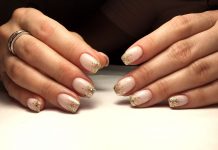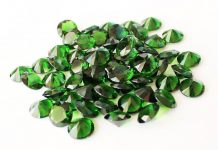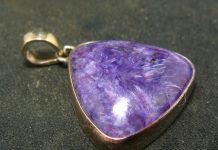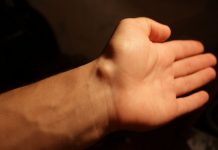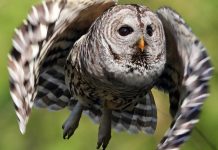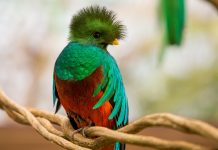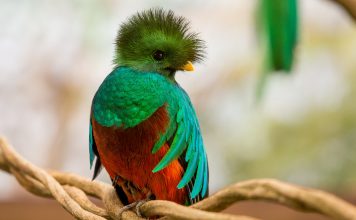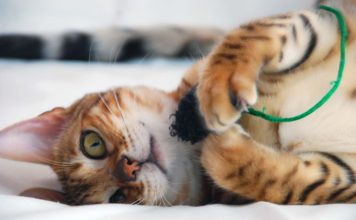Spiders are our regular neighbors. Those who live in apartments, for the most part harmless and afraid of meeting people. They are weaving webs peacefully in dark corners and waiting for the flies to leave there. But there are other types of spiders. They are poisonous and can seriously damage the health of animals and humans. To protect yourself from danger, you need to know the enemy in person, do not go, if possible, on its territory and not come into contact.
Steppe widow (lat. Latrodectus tredecimguttatus)
Steppe widow belongs to Tanet spiders, clan Black widow, view Karakurt. Habitat:
Males reach 7 millimeters in size, females can grow up to 2 centimeters. As a poison insect uses protein neurotoxins, enzymes hyaluronidase, phosphodiesterase, cholinesterase, kininase. After getting this poison under the skin begins unbearable pain and burning. After half an hour, this sensation spreads throughout the body. In addition, a person feels general weakness, drops in heart rate, vomiting, dizziness.After 3 days, depression and clouding of consciousness may be added. It takes at least a month to heal completely. Death occurs in rare cases, if no medical assistance was provided on time.
Outwardly, the spider looks unusual: it has a very small head and a disproportionately large belly. Red spots with a white edging are painted on the belly, which may disappear as adults. Only the bite of a female can be dangerous, since the male simply cannot bite through the skin of a person or large animal due to its small size.
Sydney leukopautinous spider (lat. Atrax robustus)
This spider belongs to the family Hexathelidae, the genus Atrax, species Atrax robustus. Insect lives in New South Wales, Australia. Spider size varies from 1 to 5 centimeters. When bitten, the Sydney leukopaut spider lets poison-protein delta atracotoxin into the victim. It is dangerous in that it causes paralysis of the nervous system and lungs. Death comes from choking.
Officially, 13 deaths from the bite of this insect were recorded, but after the appearance of the antidote, the deaths did not recur. Food for spider are large insects, for which he hunts with the help of an unusual cone-shaped web.
Brazilian wandering spider (lat. Phoneutria)
Brazilian wandering spider belongs to the family Ctenidae, the genus Phoneutria. You can meet this insect in the forests of Central and South America. The largest individual of this species, which was recorded, exceeded the size of 15 centimeters.
The spider is poisoning the victim with the venom neurotoxin PhTx3, which causes muscle, lung and heart failure. Death comes from suffocation, and the surviving men risk remaining impotent. Lethal outcomes were recorded in 2.3% of cases. Therefore, this insect is in the top of the most dangerous animals from around the world and even got into the Guinness Book of Records.
The spider got its name due to the habit of not staying in one place for long and not creating cobwebs. But he loves to climb into bags, shoes, cars and houses, which increases the risk of meeting people with them.
Tarantula (lat. Lycosa)
Tarantulas belong to the family of Wolf Spiders, the genus Tarantulas. These insects live on all continents and live in steppes and deserts. Individuals of this species can grow to sizes from 2 to 9 centimeters. Spider poisons its victim with concentrated digestive enzymes and neurotoxins. The poison gives the victim severe pain at the site of the bite and inflammation. When poisoning, there are muscle cramps. No deaths were recorded and medical assistance is most often not required.
Spiders of this species are second in size after tarantulas. Their body is covered with small hairs, which gives the insect a threatening look. Tarantulas feed on insects and smaller spiders. They live in holes and do not twist cobwebs.
Six-eyed sand spider (lat. Sicarius hahni)
The six-eyed sand spider belongs to the family Sicariidae, the genus Sicarius, species Sicarius hahni. The spider lives in the deserts of South Africa and central regions of South America. Insect grows from 8 to 15 millimeters. Spider venom consists of an unknown toxin with a powerful effect of hemolysis and necrosis.
After entering the body, the poison destroys the walls of the blood vessels, which causes internal bleeding. For all the time it was reported 2 deaths. The situation is saved by the fact that the six-eyed spiders are quite rare in nature and it is difficult to meet them.
Spider-lynx (Latin Oxyopidae)
The lynx spider belongs to the Oxyopidae family. These spiders are represented by 454 species divided into 9 genera. These insects are able to jump and spit poison. Spider venom can not kill a person, but can cause quite painful swelling.
The lynx spider hunts insects, hiding on plants and flowers. These animals are among the few that show signs of socialization. They can live in small groups, which is very rarely seen in spiders.
Brown hermit spider (lat. Loxosceles reclusa)
The spider belongs to the family Sicariidae, the genus Loxosceles, species Loxosceles reclusa. There is a brown spider in the southwest and southeastern United States and in Mexico.Males of this species grow to 2 centimeters, and females - up to 2.5 centimeters. Insect venom consists of enzymes - sphingomyelinase, esterase, alkaline phosphatase, protease.
Several people died from poisoning with this poison. The effect of toxins depends on the amount of injected poison. Frequent reactions to the bite become gangrene scab, nausea, weakness, fever. In the process of poisoning, destruction of blood cells occurs. The size of tissue necrosis can reach 30 centimeters. The danger of this species lies in the fact that it is not afraid of people, but with pleasure climbs into homes, cars and personal belongings. The bite trail can heal up to 3 years.
Those who are afraid of encounters with spiders should be aware of safety precautions. In places where Paks live, it is better not to set up tents. But if it is inevitable, then before going to bed the tent should be carefully examined. It is better to use a special protective canopy. You also need to carefully inspect clothing and shoes. If the bite did occur, then you need to find an insect and present it to the doctor to determine the species. Only after that, adequate treatment is possible.




